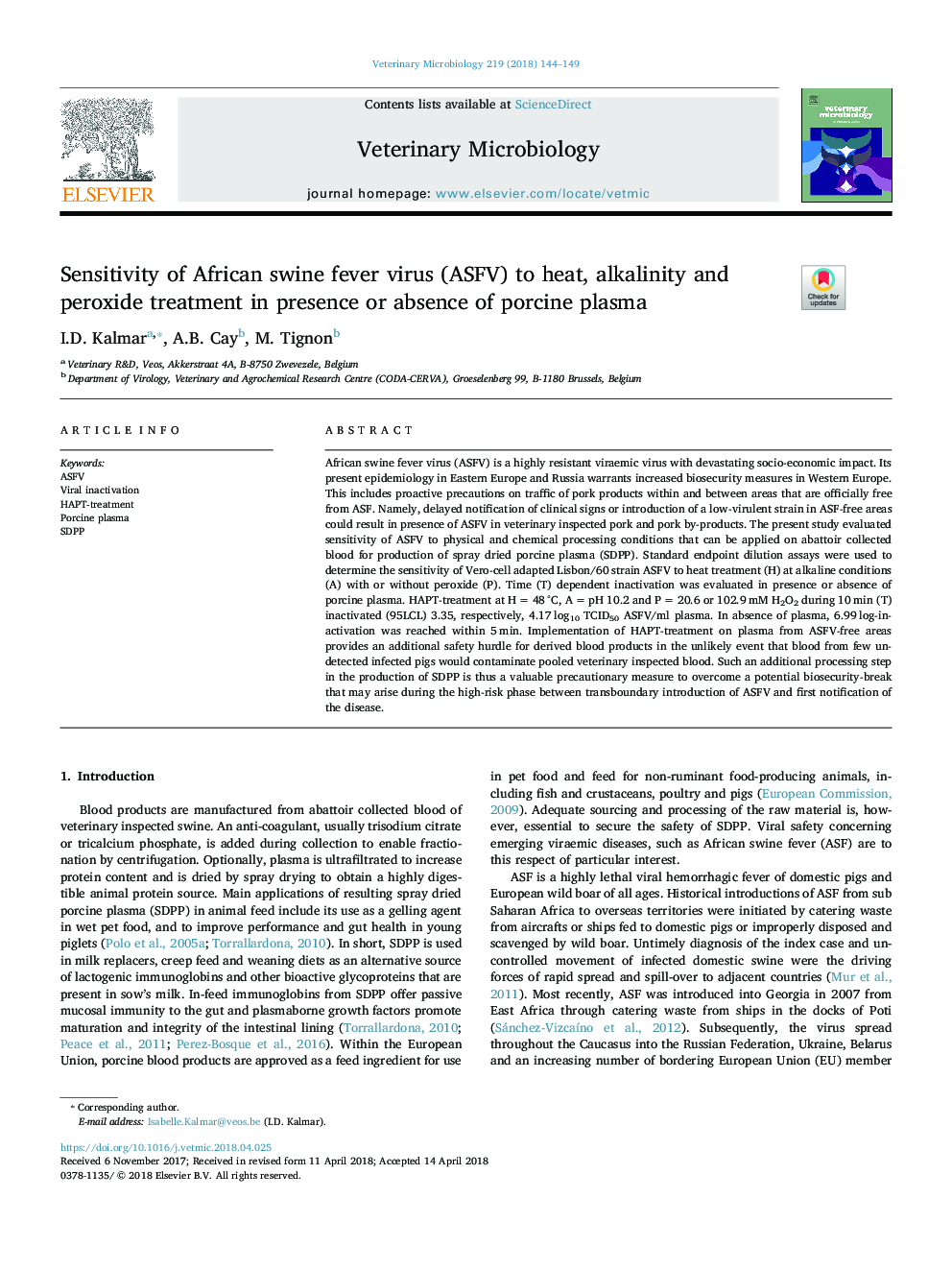| کد مقاله | کد نشریه | سال انتشار | مقاله انگلیسی | نسخه تمام متن |
|---|---|---|---|---|
| 8505352 | 1555304 | 2018 | 6 صفحه PDF | دانلود رایگان |
عنوان انگلیسی مقاله ISI
Sensitivity of African swine fever virus (ASFV) to heat, alkalinity and peroxide treatment in presence or absence of porcine plasma
دانلود مقاله + سفارش ترجمه
دانلود مقاله ISI انگلیسی
رایگان برای ایرانیان
موضوعات مرتبط
علوم زیستی و بیوفناوری
علوم کشاورزی و بیولوژیک
علوم دامی و جانورشناسی
پیش نمایش صفحه اول مقاله

چکیده انگلیسی
African swine fever virus (ASFV) is a highly resistant viraemic virus with devastating socio-economic impact. Its present epidemiology in Eastern Europe and Russia warrants increased biosecurity measures in Western Europe. This includes proactive precautions on traffic of pork products within and between areas that are officially free from ASF. Namely, delayed notification of clinical signs or introduction of a low-virulent strain in ASF-free areas could result in presence of ASFV in veterinary inspected pork and pork by-products. The present study evaluated sensitivity of ASFV to physical and chemical processing conditions that can be applied on abattoir collected blood for production of spray dried porcine plasma (SDPP). Standard endpoint dilution assays were used to determine the sensitivity of Vero-cell adapted Lisbon/60 strain ASFV to heat treatment (H) at alkaline conditions (A) with or without peroxide (P). Time (T) dependent inactivation was evaluated in presence or absence of porcine plasma. HAPT-treatment at Hâ¯=â¯48â¯Â°C, Aâ¯=â¯pH 10.2 and Pâ¯=â¯20.6 or 102.9â¯mM H2O2 during 10â¯min (T) inactivated (95LCL) 3.35, respectively, 4.17â¯log10 TCID50 ASFV/ml plasma. In absence of plasma, 6.99â¯log-inactivation was reached within 5â¯min. Implementation of HAPT-treatment on plasma from ASFV-free areas provides an additional safety hurdle for derived blood products in the unlikely event that blood from few undetected infected pigs would contaminate pooled veterinary inspected blood. Such an additional processing step in the production of SDPP is thus a valuable precautionary measure to overcome a potential biosecurity-break that may arise during the high-risk phase between transboundary introduction of ASFV and first notification of the disease.
ناشر
Database: Elsevier - ScienceDirect (ساینس دایرکت)
Journal: Veterinary Microbiology - Volume 219, June 2018, Pages 144-149
Journal: Veterinary Microbiology - Volume 219, June 2018, Pages 144-149
نویسندگان
I.D. Kalmar, A.B. Cay, M. Tignon,